Posted in Blog, Grow, Lead Your Team, Self confidence by Jo North
What is the intrapreneurship process?
An intrapreneur practises entrepreneurial activity in an established organisation through the intrapreneurship process.
Successful intrapreneurs spot opportunities that are not immediately obvious to most colleagues and make them happen to generate positive, meaningful results for their employing organisation. These results can be reputational, product or service development, or market development benefits.

The intrapreneurship process
This article brings together a number of key theories from creativity, innovation, entrepreneurship and intrapreneurship research.
I put the findings together to create a model of the intrapreneurship process, which are the steps and activities that intrapreneurs take to achieve an innovative initiative for their organisation.
I also share the individual attributes that are likely to be required during the intrapreneurship process.
What do intrapreneurs do to get results?
Here is what the research says about how intrapreneurs get results.
Antoncic and Hirsch (2003; p.20) state:
“Intrapreneurship…is an essentially activity-based or activity-oriented concept that operates at the organizational boundary and stretches [the organization]… in new directions.”
Dreamers who do
Pinchot (1985; p.xv) succinctly refers to intrapreneurs as “dreamers who do”, albeit in the context of the intrapreneur as the instigator and deliverer of new venture creation within the corporate environment. Although simple, Pinchot’s (1985) description does capture two necessary phases of the intrapreneurship process: namely creativity and innovation.
Dreaming is the creativity phase: it involves the generation of new ideas or concepts and recognition of a new opportunity by the individual intrapreneur.
Doing is the innovation phase: it involves the individual intrapreneur developing the new idea or concept generated from the creativity phase further and progressing it to implementation.

Intrapreneurs test limits and create new possibilities
Based on evidence from her studies, Rosabeth Moss Kanter (1983) describes the process by which successful corporate innovators or intrapreneurs achieve their goals. Her research took place at a time when corporate America (the context for the book, The Change Masters) had been hit hard by global recession, and was beginning the process of recovery.
Despite this, Kanter gives one of the most comprehensive accounts of intrapreneurial activities I’ve come across in my research.
The intrapreneurship process that she describes is about testing “limits and [creating] new possibilities” (Kanter, 1983; p.210).
Kanter’s intrapreneurship steps
I’ve extracted the steps that successful intrapreneurs take to achieve their goals from her text and summarised them here:
(1) They “mobilize people and resources to get things done” (p.213);
(2) “Problem definition”– “active listening to the information circulating…to translate a set of vaguely expressed needs…into an opportunity for concrete action that produces innovation.”
In so doing, the intrapreneur discovers “the basis for …conflicting perspectives – acquiring technical information, political information and supporting data…and making the project ‘saleable’” (p.218);
(3) “Coalition-building” (p.228) – getting others to actively support and engage, obtaining investment and resources. This stage also includes “horse-trading…offering promises of payoffs from the project in exchange for the support of…time and money” (p.223); and
(4) “Mobilization and completion” (p.229). External communication is a critical part of this stage to ensure that the intrapreneur maintains and gains credibility for progressing the project well and delivering their promises.
Reflection and review
To Rosabeth Moss Kanter’s (1983) stages could be added one of reflection and review.
Successful intrapreneurs are likely to continue to learn with every experience, perhaps intuitively rather than formally, and carry those lessons forward to future projects.

Intrapreneurs are ‘entrepreneur-managers’
Themes in Kanter’s (1983) study still resonate today. They are also based on robust data and insight on those organisations studied, but the findings are based on a small number of American companies at a specific point in history, some time ago.
Twenty five years on, Chakravarthy and Lorange (2008) presented the role of the ‘entrepreneur manager’, or intrapreneur. Their ‘entrepreneur-manager’ possesses both operational management and entrepreneurial skills. The research supports the premise that successful entrepreneur-managers work within the parameters of the overall corporate strategy, yet find space and autonomy to develop new initiatives and projects that enable the firm to innovate and evolve.
The ‘commandments’ of the intrapreneurship process
This echoes the rule-bending associated with Pinchot’s (1985) intrapreneur. Pinchot’s (1985) ‘The Intrapreneur’s Ten Commandments’ which include items such as:
‘Come to work each day willing to be fired’
‘Circumvent any orders aimed at stopping your dream’, and
‘Remember, it is easier to ask for forgiveness than for permission.’
Pinchot’s Intrapreneur’s Ten Commandments
These ‘commandments’ are probably reflective of the business culture of America in the 1980s.
Social responsibility and the intrapreneurship process
Pinchot later added items that are more reflective of today’s greater focus on social responsibility, such as ‘Keep the best interests of the company and its customers in mind, especially when you have to bend the rules or circumvent the bureaucracy’. Also, ‘Don’t ask to be fired; even as you bend the rules and act without permission, use all the political skill you and your sponsors can muster to move the project forward without making waves.’
Intrapreneurs see the big picture and shape strategy
Chakravarthy and Lorange (2008) propose some key actions taken by their entrepreneur-managers as seeing ‘the big picture’ and ‘shaping strategy’. They also ‘communicate and market the value proposition’. Chakravarthy and Lorange (2008) provide little discussion of how the entrepreneur-managers generate ideas or of the implementation process, though, and describe success as specific individual traits rather than as actions that the individual takes or the outcomes achieved – initiatives are driven through by ‘passion and inner fire’, ‘an action orientation’ and ‘self-confidence’, along with a ‘propensity to take risks’.
To achieve the game-changing results that shape strategy in the way that Pinchot (1985; 2011) and Kanter (1983) outline, these qualities are certainly likely to help the intrapreneurship process. The limitations of Chakravarthy and Loranges’s (2008) research are that the findings are based on a small number of qualitative observations from only five organisations, all large, multi-national, product-led businesses. As a result, the data to support the authors’ (in the main, very sensible) assertions are lacking and are weak on describing process stages.

Intrapreneurship research
I delved deep into intrapreneurship research from around the world and created the summary that you can see in the graphic below. The themes are organised into the discrete, logical and sequential steps that the intrapreneur takes in the process of generating successful outcomes for their employing organisation. I’ve included all the references so that you can look them up and read more if you’d like to.
A consistent theme in the literature is that successful intrapreneurship follows from a number of key stages. These include:
1. Some sort of creative stimulus that leads to an opportunity, which is recognised by the intrapreneur as having the potential to be successful: Belousova and Gailly (2013); Colarelli O’Connor and Rice (2001); Gapp and Fisher (2007); Kanter (1983); Menzel (2007); Menzel et al. (2007); Seshadri and Tripathy (2006).
2. Creative development in which the idea and opportunity are further explored or worked on: Belousova and Gailly (2013); Colarelli O’Connor and Rice (2001); Gapp and Fisher (2007); Koen et al. (2002); Menzel (2007) and Menzel et al. (2007); Seshadri and Tripathy (2006).
3. Generating support and getting the go ahead to proceed through influencing and persuasion: Belousova and Gailly (2013); Chakravarthy and Lorange (2008); Colarelli O’Connor and Rice (2001); Gapp and Fisher (2007); Kanter (1983); Koen et al. (2002); Moriano et al. (2014).
4. Of course, at some point the successful intrapreneur needs to put the plan into action and make it happen: Belousova and Gailly (2013); Chakravarthy and Lorange (2008); Colarelli O’Connor and Rice (2001); Foley (2012); Gapp and Fisher (2007); Kanter (1983); Menzel (2007); Menzel et al. (2007); Moriano et al. (2014); Seshadri and Tripathy (2006).
Additional elements of the intrapreneurship process
These stages 1-4, although sequential, are unlikely to be always carried out in a linear fashion as the intrapreneur needs to navigate internal politics and overcome hurdles on the way (Kanter, 1983).
Some examples of the literature also refer to a post-implementation learning phase: Gapp and Fisher (2007); Menzel (2007); Menzel et al. (2007); Moriano et al. (2014).
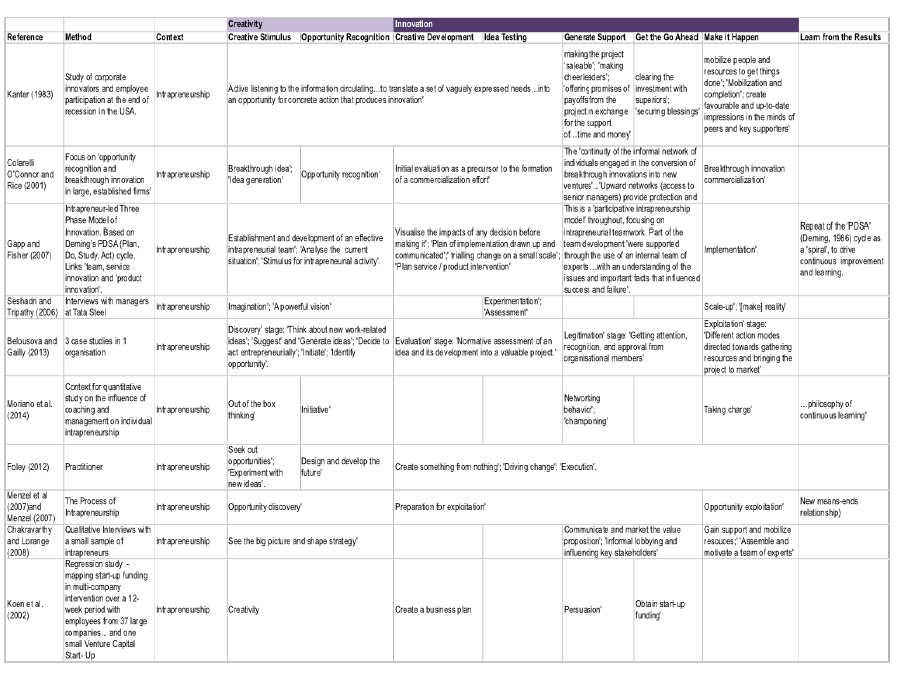
Creative Problem Solving, Product & Service Innovation and Entrepreneurship
Intrapreneurship literature deals predominantly with the skills, behaviours and traits of intrapreneurs – the intrapreneurship process is only a secondary consideration at best. So I also reviewed models of the creative problem solving, product innovation and entrepreneurship processes.
1. Creative Problem Solving Processes
Creative Problem Solving (CPS) is a step-by-step process designed to spark creative thinking, resulting in the generation of innovative solutions and purposeful change.
Puccio et al. (2012) define CPS as follows:
“By “creative” we mean the production of ideas or options that are both new and useful…By “problem” we mean a situation that exists when there is a gap between what you have and what you want…By “solving” we mean taking action in some way… By “process” we mean a particular method of doing something, generally involving a number of steps or operations.”
With every new idea, opportunity, challenge or venture, the individual intrapreneur has at least one, often several or many, creative problems to solve.
It could be argued that the intrapreneurship process, which generates innovation with the intention of achieving successful intrapreneurial outcomes for the organisation, is a very specific example of the Creative Problem Solving Process in action.

Evolution of the Creative Problem Solving Process
High level summary of the Creative Problem Solving Process
Here’s a high level summary of points of the Creative Problem Solving Process.
The originator of the Creative Problem Solving Process, Alex Osborn, was a founding partner of an American advertising agency. He published a seven-stage Creative Problem Solving Process (Osborn, 1952), which comprises ‘Orientation’, ‘Preparation’, ‘Analysis’, ‘Hypothesis’, ‘Incubation’, ‘Synthesis’, and ‘Verification’.
Further publications (Osborn 1953; 1957; 1967) raised general awareness of the method (and also launched the concept of ‘brainstorming’ into common practice and language for the first time).
Later, Osborn refined his process to contain only three stages (Osborn, 1967): ‘fact-finding’; idea finding’; and ‘solution finding’.
Osborn met and began to collaborate with Sidney Parnes, who continued to develop Osborn’s work after he died to create a five-stage process (Parnes, 1967a; 1967b) with the educational purpose of enabling students to develop their personal creativity.
Through the application of the five-stage process in a range of education progammes in the US, the model became known as the Osborn-Parnes Creative Problem Solving Model (Parnes, 1967a; 1967b), the 5 stages being ‘fact-finding’, ‘problem-finding’, ‘idea-finding’, ‘solution-finding’ and ‘acceptance-finding’.
This was further developed collaboratively with others through the 1970s (e.g. Noller et al., 1976).
Isaksen and Treffinger (1985), in their article on the history, development and implications of Creative Problem Solving for Gifted Education and Talent Development, provide a comprehensive summary of how Osborn’s (1952) original Creative Problem Solving model has been improved and refined over time with experience, improved knowledge and changing requirements. They contrast earlier versions of the model with the process they propose for contemporary use – Version 6.1 (2005; 2010).

Creative Problem Solving Thinking Skills Model
One of the most recent models developed is the Creative Problem Solving Thinking Skills Model (TSM) by Puccio, Mance & Murdock, 2011):
‘This [TSM] model…contains three conceptual stages (clarification, transformation, and implementation); six explicit steps (exploring the vision, formulating challenges, exploring ideas, formulating solutions, exploring acceptance, and formulating a plan), each including divergence and convergence; and one executive step at the heart of the model to guide them all (assessing the situation).
By implementing the skills incorporated within this model, organisations can prepare their staffs to deliver more creative and innovative results.’
Table 4 summarises the themes arising from the Creative Problem Solving literature organised into discrete, sequential steps. Analysis of this summary in the graphic below highlights some consistent themes. Each of these key steps that can be transferred from Creative Problem Solving Models to the intrapreneurship process using the descriptions also derived from previous graphic on creative stimulus, opportunity recognition, creative development, idea testing, generate support, get the go ahead, make it happen and learn from the results.
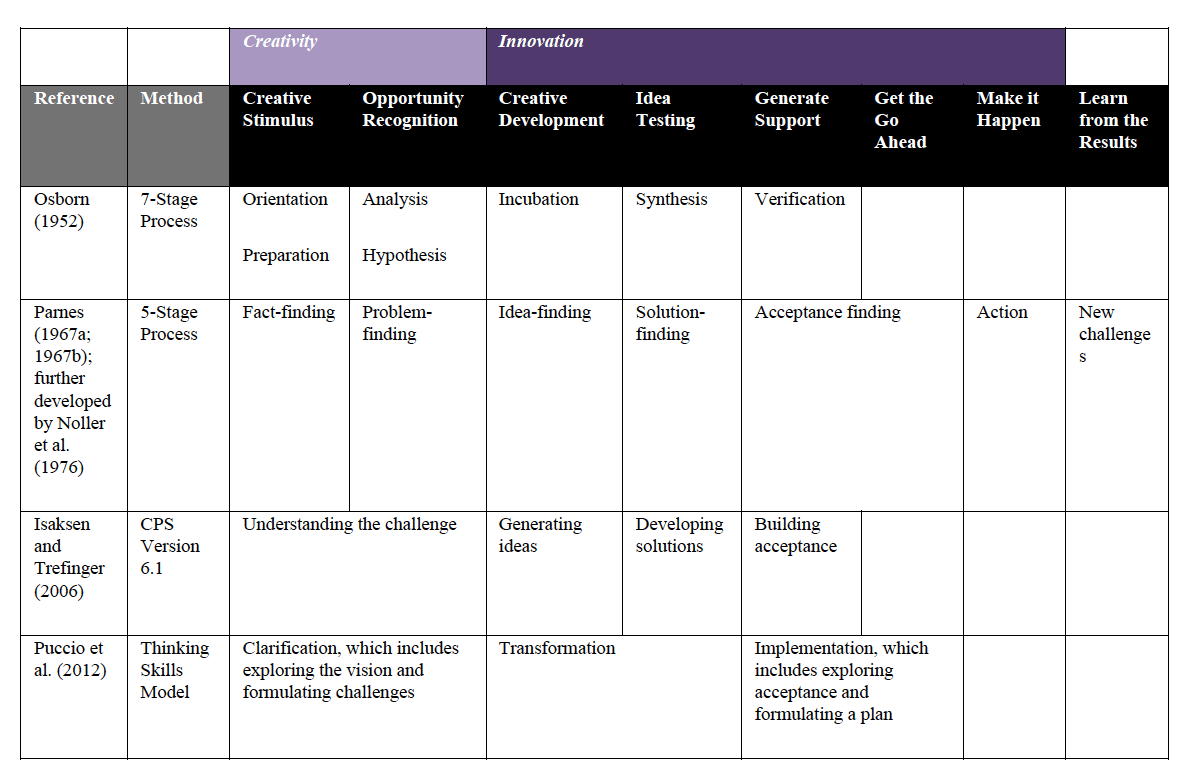
Innovation processes
I’ve used Jacobs and Snijders’ (2008) definition of the innovation process because it is directly parallel to the activities undertaken by the individual intrapreneur.
Jacobs and Snijders (2008) describe the innovation process as being first the development and selection of ideas for innovation followed by the transformation of these ideas into the innovation.
This can be adapted for the intrapreneurship process as follows: ‘the development and selection of ideas for positive intrapreneurial outcomes for the organisation and the transformation of these ideas into those positive intrapreneurial outcomes.’
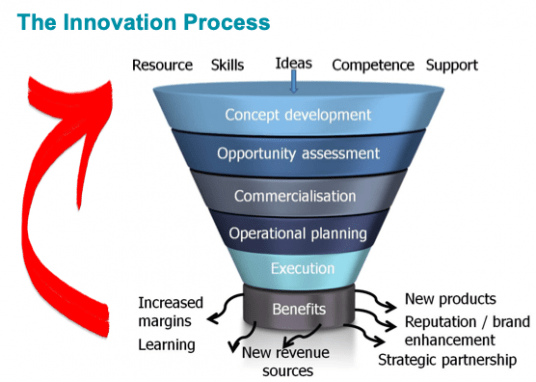
Links between intrapreneurship and the innovation process
Links are identified between intrapreneurship and the innovation process (McFadzean et al., 2005), i.e. intrapreneurship requires an individual internal entrepreneur (intrapreneur) to interact with the organisation’s innovation process, where one explicitly exists, to bring innovation / intrapreneurial outcomes to fruition.
Other research provides empirical links between corporate entrepreneurship and innovation (Hitt et al 2001; Lumpkin and Dess, 1996; Ireland et al., 2006).
Whilst innovation models are sometimes justifiably criticised for being too simplified e.g. Tidd et al. (2005) and Jacobs and Snijders (2008), they can provide a useful summary of the key steps.
The intrapreneurship process is consistent with innovation process models in the literature in that it also includes key phases of main activities that may or may not occur in a non-linear fashion.
‘The process of innovation involves search and selection, exploration and synthesis, cycles of divergent thinking and convergence’
Khurana, 2013 online
Product innovation observations
Bucherer et al. (2012, pp.183-186), make the following observations with regard to Product Innovation:
• There is usually a ‘logical sequence of process steps’;
• ‘Normative process models can be used for guidance’;
• There can be ‘difficulties for existing organizations to serve the old and the new concurrently’; and
• There may be ‘rather chaotic process, at least in early phases’.
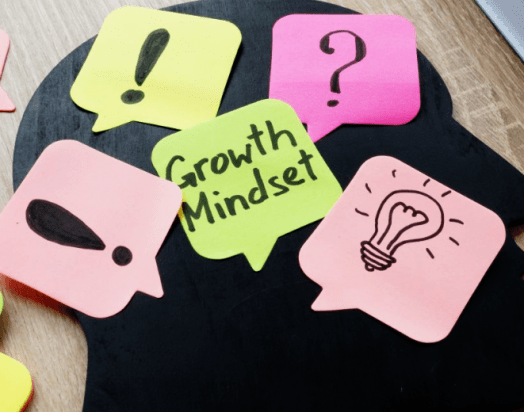
Each of these observations could equally be applied to the intrapreneurship process. A key difference between the intrapreneurship process and product innovation processes is that organisations may have a defined business process for product innovation, especially where it is a core organisational component for survival and where financial and other resources exist to support new product development.
The Stage Gate Innovation Process
Innovation processes feature similar concepts of divergence and convergence as the Creative Problem Solving models discussed earlier, for example Ahmed and Shepherd (2010, p.49).
Cooper’s (2000) Stage Gate process is actively used in numerous organisations in addition to being an academic model. The commercial Stage Gate website shows case studies from organisations such as Mars and Kelloggs amongst others. Gassman and von Zedtwitz (2003) describe the model as being suitable for ‘market pull’ and ‘incremental innovations.’
The Stage Gate process is not without its critics, however. Koetzier, Alon, and Hooper (2012) in their global research study for Accenture, which is of course a commercial competitor to Stage Gate, describe this sort of gate process in these terms: ‘For many companies, the funnels end up producing only weak, incremental ideas that often come to market slowly and miss cost targets.’
Potentially it is not the process itself that is the issue, variable results suggest that it is more about how effectively and efficiently the organisation applies the process and how well it is adapted and developed to the organisation’s specific needs in practice.
Alon, Koetzier and Culp’s (2012, online) recommendation from their research into 60 innovative companies from the perspective of the impact of innovation on risk and market value is for the focus to be on three key areas: ‘governance’, ‘portfolio’ and ‘process’. ‘Governance’ and ‘process’ are integral within Cooper’s (2000) model.
However, Alon, Koetzier and Culp’s (2012, online) additional dimension of ‘portfolio’ introduces the need for organisations to manage individual innovations in the context of the wider business and be able to experiment with a wider number of innovations to establish early on which ones are likely to be the most successful.

Innovation process and risk
Research points to the risk of failure in the innovation process, which requires mitigation by building risk consideration into the decision-making processes. This consideration is incorporated in the Stage Gate (Cooper, 2000) model (Bowers and Khorakian, 2014).
The ‘Generate support’ and ‘Get go ahead’ phases of the Intrapreneurship Process are woven throughout Cooper’s (2000) Stage Gate process at each decision ‘gate’. These elements are required to not only get through every screening point, but are also needed to mobilise progress between screenings. This is also likely to be the case in practice for many intrapreneurs – particularly as some intrapreneurs operate their own individual intrapreneurship process within an organisational Stage Gate process or similar.
Certainly intrapreneurs need to generate ongoing support and are usually required to get some sort of official sign-off to proceed at key points in the development of the initiative.
High-tech product innovation process
Rafinejad (2007, p.164) presents a high-tech product innovation process, called ‘NPDCP’, or ‘New Product Development and Commercialization Process’, which he describes like this:
“A generic process for the development and commercialization of new high-tech products (NPDCP…)…In this process, knowledge generation and integration proceed through a series of phases (each with distinct purpose) until the product design and the process are qualified as satisfying the target market needs and as meeting business objectives. The PDCP is linked to the firm’s product strategy (at the intersection of business, market, and technology strategies).”
Rafinejad, 2007
Innovation process stages
The graphic below summarises the key stages of each of these three different Innovation Processes: Cooper, 2000; Rafinejad, 2007; Ahmed and Shepherd; 2010.
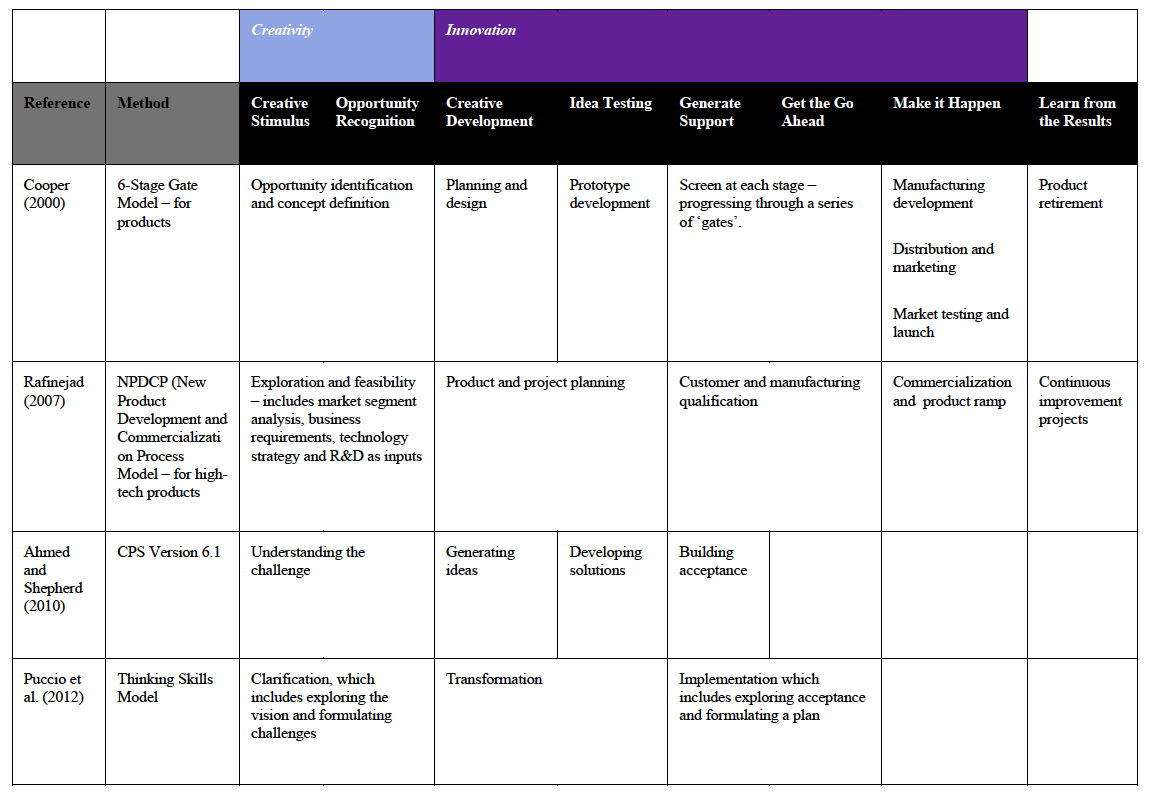
Entrpreneurship processes
‘The intrapreneurial process is similar to the entrepreneurial process, with business plans and idea champions,’ (Pinchot, 1985).
For the purposes of this research, the definition of the entrepreneurship process is the series of actions or steps to progress from the generation of an idea for a new business venture to the successful commercialisation of that venture idea, and the launch of a new business or organisation.
The three key areas of competency that entrepreneurs need to be successful in business venturing. These are: entrepreneurial, being able to see opportunity and how to use that opportunity to start up a firm; managerial, being able to project manage, coordinate and influence others to achieve business strategy implementation; and technical-functional, having the knowledge and skills necessary to be successful in a particular field.
Competencies
These competencies are enablers of the entrepreneurship processes that I discuss here.
Bhave’s (1994) ‘Entrepreneurial Venture Creation Process’ Model separates the ‘opportunity recognition sequences’ and ‘venture creation’ phase, consistent with Pinchot’s (1985) description of intrapreneurs as ‘dreamers who do’, distinguishing between the creativity and innovation phases of entrepreneurship.
Morris, Lewis and Sexton’s (1994, online) ‘Integrative Approach’ is based on inputs being transformed into outputs. They state that it is applicable to new start-ups but also to established companies beginning new ventures, creating further applicability to the intrapreneurship process. The authors assert that their input-output model attempts ‘to clarify the nature of entrepreneurship…The input component enables…focus on the process nature of entrepreneurship and distinguishes the entrepreneur from the entrepreneurial process. The output component stresses the variable nature of entrepreneurship and recognizes the variety of possible consequences that can result when inputs are combined.’
They claim that “importantly, the framework is descriptive of entrepreneurial efforts in organizations of all sizes and types,” and therefore has relevance also to the intrapreneurial context.
Morris, Lewis and Sexton (1994) also note that entrepreneurial behaviours and activities vary across industry and firms. This is also deemed to be the case for intrapreneurship.
Stages of business growth
Research by Levie and Lichenstein (2010, p.318) indicates that ‘Most models of new business growth assume a limited number of distinct stages through which businesses pass as they age (e.g., Churchill & Lewis, 1983; Greiner, 1972; Hanks, Watson, Jansen, & Chandler, 1993).
The stages approach to modelling growth can achieve extremely high face validity: 100% of founding entrepreneurs in one study were able to unambiguously identify their company as being in one of five defined stages (Eggers, Leahy, & Churchill, 1994). They note that: “many experts find it convenient to talk about six different phases through which companies move, (Baron and Shane, p. 336).”
Dynamic states model of entrepreneurship
Levie and Liechenstein (2010) propose a ‘Dynamic States’ Model.
‘A dynamic state is a network of relationships and systems that convert opportunity tension into value for a venture’s customers, generating new resources that maintain the dynamic state’
(Kuratko, 2013, p.13).
It is the role of the successful intrapreneur to identify and convert ‘opportunity tension into value’ for the employing organisation.
The Dynamic States Model shows ventures as being reliant on the external environment for survival. Kuratko (2013, p.13) describes this model as being a ‘process-oriented view that incorporates an array of individual, organizational and environmental elements’, going on to observe that the ‘dynamic states model is more optimistic [than the integrative model] for entrepreneurs…enabling entrepreneurs to organize for the current and anticipated demands of the market.’
The role of ‘entrepreneur’
The role of the ‘entrepreneur’ used throughout descriptions of the Dynamic States Model, both by the authors Levie and Liechenstein (2010) and commentators such as Kuratko (2013), could be interchanged with the term ‘intrapreneur’. The model has relevance for existing firms as well as start-up situations because it addresses organisational growth stages.
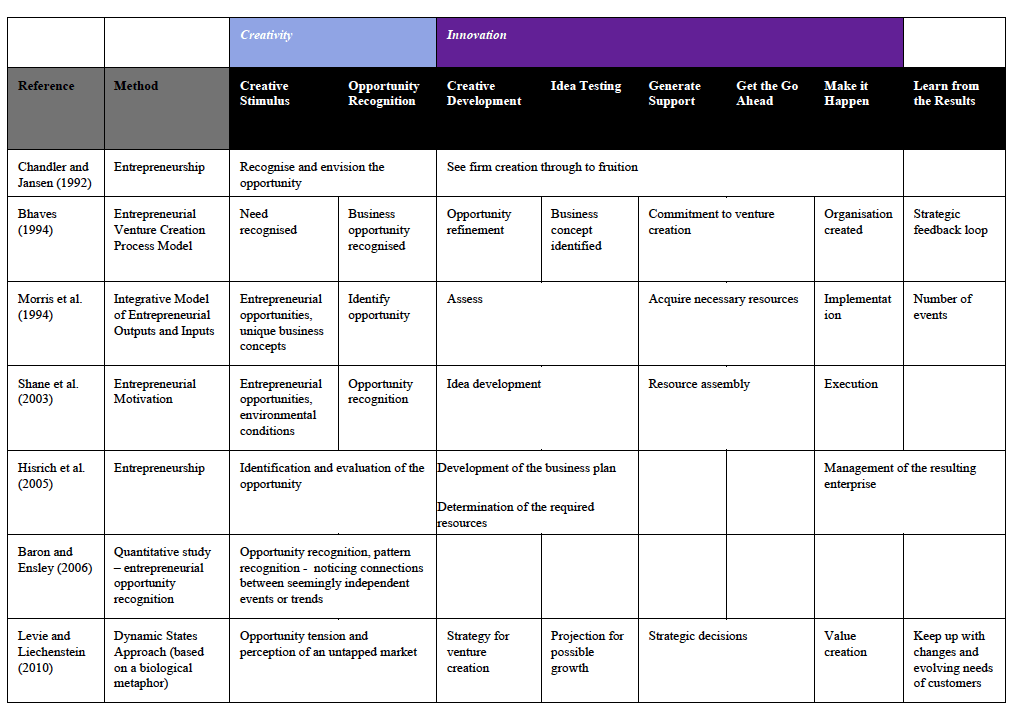
Intrapreneurship process and risk
The Dynamic States Model indicates that reading and responding to the external environment through innovation is a key success factor for organisational survival. It is the intrapreneurs within organisations who propose and implement the risks associated with innovation, and there is strong consensus in the literature that the risk in intrapreneurial innovation goes hand in hand with at least occasional failure (Kanter, 1983; Sauser, 1987; Manimala et al., 2006; Martiarena, 2013; Subramanian, 2005;Lombriser & Ansoff, 1995).
This inherent risk of failure of intrapreneurship prompts reflection on the factors that drive individual intrapreneurs. Why do they put themselves forward to take such risk? Why do they navigate the intrapreneurship process repeatedly for different projects and innovations?
Intrapreneurial motivation
The subject of human motivation is a highly complex one and a specialised field, and a detailed study, although exceptionally interesting is outside the scope of this article. However, it is useful to observe as part of the consideration of the intrapreneurship process that the task of the intrapreneur does not always appear to be easy.

Self-efficacy and intrapreneurship
Dealing effectively with risk, influencing others to take new initiatives and the creative problem solving needed to operationalise opportunities can be very challenging.
For the intrapreneur to take on such challenge and to stick their head above the proverbial parapet requires self-belief and courage at times. This self-belief , self-confidence and courage can be expressed as ‘self-efficacy’.
Self-efficacy is…
“people’s beliefs about their capabilities to produce designated levels of performance that exercise influence over events that affect their lives.”
Bandura (1994; p.71)
From the perspective of self-efficacy in the work environment, there is evidence that self-efficacy in a particular area influences individual choice of career (Lent et al., 1999); domain-specific self-efficacy gives confidence to pursue an innovative action (Lucas et al., 2009; Koellinger, 2008) and take on challenges (Bandura, 1997; Fletcher, 1990); and links to how well people perform at work (Stajkovic and Luthans, 1998), in the entrepreneurial setting (Anna et al., 2000) and business growth (Baum 1994).
Entrepreneurial self-efficacy has also been shown to relate to new venture creation (Krueger, 1993; Krueger et al., 2000; Zhao et al., 2005).
Self-efficacy and intrapreneurial intent
The links between self-efficacy and intention are demonstrated in the literature in the specific domain of entrepreneurship (Ajzen, 1991; Boyd and Vozikis, 1994; Krueger, 1993; Krueger and Brazeal, 1994; Krueger et al., 2000; Shapero and Sokol, 1982; Zhao et al., 2005).
Lucas et al. (2009) find in their study of engineering undergraduates that the scale of venturing self-efficacy presented correlates with the intention measure used. The evolution of entrepreneurial intention models in the 1980s and 1990s is summarised by Guerrero et al. (2008). Up to the 2008 publication date, Guerrero et al.’s (2008) research shows that the most recent entrepreneurial intention model was published in 1995, Davidsson’s Model (Davidsson 1995a; 1995b) which is based on
The individual intrapreneur not only requires sufficient domain-specific self-efficacy, but also intent that is powerful enough to drive action in order to propel the individual intrapreneur to take a path that many of their colleagues might feel is too risky, involves too much hard work, or even see as unrealistic.
Intrapreneurship and the Theory of Planned Behavior
The literature cites Ajzen’s Theory of Planned Behavior (1985; 1991; 2011) as one of the most frequently applied and ‘influential models for the prediction of human social behavior’ (Ajzen, 2011; p.1113) across a diverse range of research domains, especially in social science relating to health.
Its generic applicability has been criticised in favour of models designed to test intent and specific elements of behaviour, also to help the creation of interventions designed to help people change where they wish to do so (Sniehotta et al., 2014).
However, considering the Theory of Planned Behavior (Ajzen, 1991) in the context of individual intrapreneurship suggests that any employee who undertakes the intrapreneurship process has confidence: confidence that they possess the ability to work things out and see the project through to successful fruition; confidence that what they are proposing will be judged positively by internal influencers and ultimately by the target market; and confidence that they have the inner power to effect and influence the desired outcomes.
The rewards of so doing may vary according to the individual’s role, the employing organisation, industry and location. In the case of the individual intrapreneur, although some may receive large financial performance bonuses, many may not.
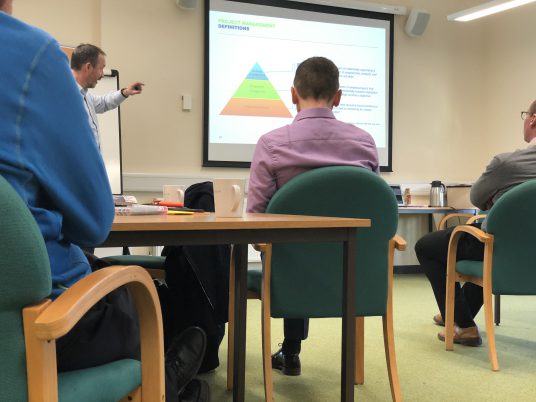
Intrapreneurship and Expectancy Theory
Expectancy theory (Vroom, 1964) also suggests that in addition to the individual intrapreneur having the self-belief that they expect to achieve the first-order outcome of successful achievement of the project, the principle of instrumentality indicates that the second-order outcomes, the rewards of successful attainment, will be forthcoming and also actually worth the individual intrapreneur’s effort.
These rewards may include praise and recognition from superiors, promotion, salary benefits, job security and greater acceptance by colleagues, as well as the intrinsic motivation of doing interesting, stimulating work and successfully overcoming the challenge.
The intrapreneurship process demonstrates that the individuals who embark on the intrapreneurial journey and succeed are driven and possess the self-efficacy necessary to challenge the status quo and achieve positive outcomes for the organisation.
The intrapreneurship process – overview
Combining the Intrapreneurship, Creative Problem Solving, Innovation and Entrepreneurship Process literature reviewed above has led to the identification of the Creativity Phase (Pinchot’s (1985) dreaming) in the Intrapreneurship Process as including a number of sub-phases, which are described as follows and depicted in the graphic below, which shows my proposed model of the individual intrapreneurship process.
• Creative stimulus stage – in which the intrapreneur is absorbing information, connections and inspiration as the source of the potential new intrapreneurial idea or concept.
• Opportunity recognition – in which the intrapreneur experiences a cognitive process to identify what the new idea is and how the new idea could beexploited or realised (O’Connor and Rice, 2001).
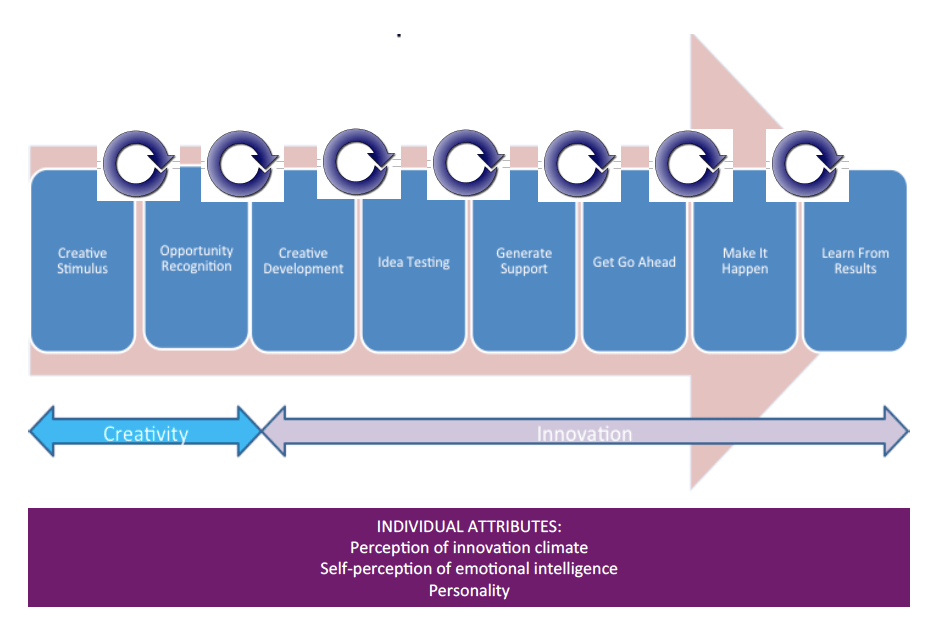
Individual Intrapreneurship Process Model, Synthesised from the
Research Literature. For a full size version, download my full PhD thesis for free here
Stages of the intrapreneurship process
The Innovation Phase of the Intrapreneurship Process (Pinchot’s (1985) ‘do’-ing) involves the individual intrapreneur developing the new idea or concept generated from the Creativity Phase and progressing it to implementation.
The stages of the intrapreneurship process can be broken down into the following phases based on the research literature:
• Creative development – the intrapreneur develops the new concept further to make it more robust or add greater intrinsic value.
• Idea testing – the intrapreneur undertakes some research or takes soundings to test the potential for the new concept to succeed.
• Generate support – influencing to mobilise active support from enabling individuals or organisations to access resources, funding, political endorsement.
The ‘entrepreneur-manager’
Chakravarthy and Lorange (2008), in their research on ‘the entrepreneur-manager’, describe this as including the need to “Manage stakeholders, gain support and mobilize resources” and “assemble and motivate a team of experts”. This refers to the need for the entrepreneur-manager to be able to motivate people internally across functions to support the implementation and delivery of his / her initiative and also lead a diverse team of people.

Kanter (1983) observes from her research into corporate entrepreneurs in America the need for the capacity to mobilise people and resources to make things happen, as well as getting others to buy-in, lining up supporters in advance of formal approval from higher levels, with emphasis on one-to-one meetings to remove obstacles and opposition upfront. This stage also includes influencing, “horse-trading” (p.223), providing reassurance of success and results.
• Get the go ahead – generating the final permission to proceed with launching the new intrapreneurial concept.
• Make it happen – delivering the launch and live application of the new concept.
• Learn from the results – reflective practice to identify how to strengthen the outcomes from the project to develop and launch the new concept; identifying lessons that can also be applied to future projects.
The intrapreneurship process is iterative
The intrapreneurship process is usually not linear when it takes place in reality. It is much more likely that the intrapreneur will cycle forwards and backwards between stages as new information, challenges or opportunities emerge.
In addition, if a potential intrapreneurial initiative appears likely to lack the generation of organisational traction as activities develop, the intrapreneur may choose to abandon or postpone pursuit of the initiative at any stage. This may be to replace such initiatives with ones that have greater potential, to protect the intrapreneur’s credibility, or to simply await better timing, along with other potential reasons for cessation or postponement.
The successful intrapreneur will use their judgement in determining which ideas should be fully pursued and which should be left. As Bucherer et al. (2012, p.185) observe: “innovation processes often include proliferation of ideas into several paths” and there are often unpredictable issues and challenges to overcome (Schroeder et al., 1999).
The innovation funnel or filter
As Eveleens (2010, p.4) notes: “Models are simplified versions of reality”. The intrapreneur is unlikely to pursue all the creative ideas for growth that they generate. Rather, they use a self-imposed and potentially intuitive rather than deliberative personal ‘innovation funnel’ or ‘filter’ that is analogous to organisational processes, if not as deliberate. (Cooper and Edgett, 2009; Dunphy et al., 1996; Wheelwright and Clark, 1992); or ‘gates’ (Cooper, 2000).
Selecting the most appropriate new intrapreneurial initiatives to progress and identifying which ones should be rejected is likely to comprise a critical success factor for the intrapreneur. How intrapreneurs conceive of and select their proposed initiatives for development does have potential for further research.
Self-efficacy
The intrapreneur needs to possess domain-specific self-efficacy and intrapreneurial intent, supported by a positive organisational innovation climate (e.g. Amabile, 1997; Antoncic, 2007; Colarelli O’Connor and Rice, 2001; Eesley and Longenecker, 2006; Gapp and Fisher, 2007; Kuratko et al. 1990; Manimala et al., 2006; Menzel et al. 2007). He or she also needs to possess the appropriate individual attributes needed to achieve each stage.

Limitations of my proposed Individual Intrapreneurship Process Model
Individual heuristics and cognitive maps
Some organisations have formal innovation processes for product or service development. The individual intrapreneur intuitively develops his or her own version of this process for their own intrapreneurial initiatives. In all likelihood the intrapreneur generates their own process through experience and heuristics (Gigerenzer and Gaissmaier, 2011; Gigerenzer et al., 1999). The intrapreneur’s own process is based on their own cognitive map of how the organisation works and how to make things happen.
Heuristics and cognitive maps are specialist areas within the Psychology domain; to study them in detail from the specific perspective of intrapreneurship is beyond the scope of this article. However, it is a useful point to note and a potentially rich area for further new research.
Individual differences
Noting that each intrapreneur is likely to take a highly individual approach, the steps in the intrapreneurship process are common to most intrapreneurs. These steps may happen differently and with varying levels of focus, depending on the context.
In some circumstances the individual intrapreneur needs to work within (or alongside / outside) any existing organisational innovation processes, taking into account Pinchot’s (1985) ‘commandments’.
These are…
‘Work underground as long as you can.’
‘Do any job needed to make your project work, regardless of your job description.’
‘Circumvent any orders aimed at stopping your dream.’
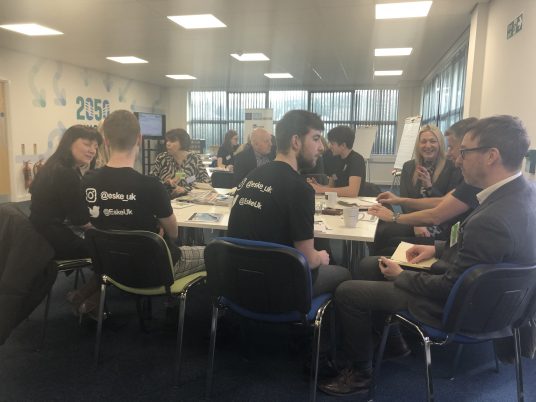
Self-efficacy and intrapreneurial intent
The individual intrapreneur needs to possess sufficient self-efficacy and intent. He or she also requires a sense that the rewards and outcomes of the effort and risk imbued within the intrapreneurship process will be forthcoming and worthwhile.
Having selected an idea that has potential for the organisation, the successful intrapreneur is likely to undertake a series of activities that require use of different attributes to navigate the intrapreneurship process successfully, to bring new ideas through to implementation.
Not all intrapreneurs are created equal
It is unlikely that all employees are intrapreneurial to the same extent.
It is also likely that some employees incline more towards intrapreneurial endeavours than others do.
The activities that comprise the literature-derived intrapreneurship process presented in this article form the conceptual, operational context for this research based on the literature.
Next steps
If you’d like to discuss how to develop a more intrapreneurial, innovative culture in your business, we’d love to hear from you.
We can help with intrapreneurship programmes, workshops, events and also work with your top intrapreneurial talent one-on-one, or in mastermind groups. We help them build on their strengths and accelerate your business success.
Just use our contact us form to get in touch and we will book in time for a no-obligation discovery call.

